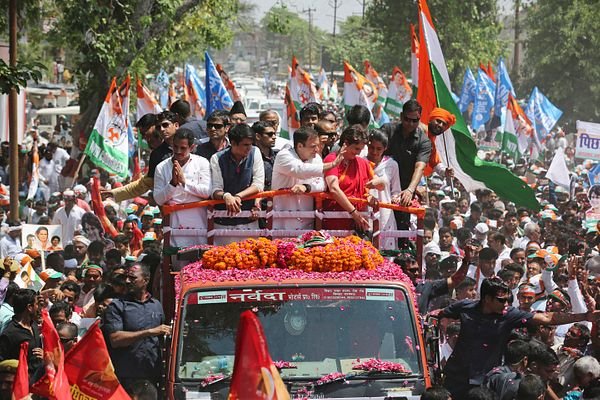Why in the News?
- The government is considering a scheme to attract Indian-origin star faculty in STEM to work long-term in Indian research institutions.
- The plan seeks to use recent push factors in the US higher-education environment as an opportunity to strengthen India’s research ecosystem.
Key Highlights
- What is STEM?
- STEM refers to the collective fields of Science, Technology, Engineering, and Mathematics, which form the backbone of modern innovation, industry, and research.
- These disciplines focus on developing critical thinking, problem-solving, and analytical skills that drive technological advancement and economic growth.
- Nations invest heavily in STEM education and research to enhance competitiveness, industrial innovation, and technological self-reliance.
- STEM is a national priority under initiatives like Make in India, Digital India, and Atmanirbhar Bharat, which depend on skilled scientists and engineers.
- It encourages hands-on learning, interdisciplinary approaches, and application of theoretical knowledge to real-world challenges such as climate change, healthcare, and AI.
- Why has the idea of harnessing NRI (Non-Resident Indian) talent surfaced now?
- Recent policy shifts abroad have created push factors for researchers in the US and some other countries.
- The Indian government wants to turn this into a pull by offering attractive positions and support for returning scientists.
- How would the proposed scheme work?
- The scheme plans to offer longer-term positions in premier institutes including IITs and national research labs.
- Returnees would receive a substantial set-up grant to buy equipment and create research groups.
- The package aims to be generous enough to persuade stayers abroad to move.
- Past and ongoing Indian government schemes that aimed to attract NRI or Overseas Indian-origin talent in the STEM field:
| Scheme | Launched By | Focus Area | Type | Key Feature |
| Ramanujan Fellowship | DST (Department of Science and Technology) | All STEM fields | Long-term | Salary + research grant |
| Ramalingaswami Fellowship | DBT (Department of Biotechnology) | Life Sciences | Long-term | Salary + lab support |
| INSPIRE Faculty Award | DST | Science & Engineering | Long-term | Research independence |
| VAJRA Scheme | DST | Advanced Research | Short-term | Work 3 months/ year in India |
| GIAN Programme | Ministry of Education | Academic exchange | Short-term | Teaching collaboration |
| Raja Ramanna Fellowship | DAE (Department of Atomic Energy) | Nuclear/Atomic fields | Long-term | Senior scientist support |
- What lessons we took from past schemes and the risk of “paid vacations”
- Short-term collaborations are not enough
- Earlier schemes like GIAN and VAJRA focused mainly on short visits, which were often used as brief stays (paid vacations) rather than long commitments.
- This helped in knowledge exchange but did not lead to long-term institutional growth or capacity building.
- Short-term collaborations are not enough
- To avoid repetition, the new scheme emphasises longer engagement and institutional appointments.
- Need for smoother administrative and financial processes
- Scientists returning to India often faced bureaucratic hurdles — slow fund disbursement, complex tendering rules, and long approval chains.
- Lesson: Simplify procurement, fund release, and recruitment processes to ensure a true “ease of doing research” environment.
- Institutional support matters more than money
- Even with good fellowships (like Ramanujan or Ramalingaswami), many returnees struggled due to lack of infrastructure, mentoring, and lab staff.
- Lesson: Provide holistic support systems — labs, skilled manpower, and institutional integration.
- Cultural and work environment adjustment is crucial
- Returnees often found it difficult to adapt to hierarchical structures, rigid systems, and slow decision-making in Indian institutions.
- Lesson: Promote a collaborative and flexible research culture to help them adjust and contribute effectively.
- Equity among existing and returning scientists
- Offering special incentives to NRIs created resentment among resident scientists, leading to friction in institutions.
- Lesson: Design schemes that balance recognition and fairness, ensuring existing researchers also benefit through collaboration.
- Long-term vision and continuity are essential
- Many past schemes lacked consistent funding and monitoring, leading to loss of momentum.
- Lesson: Develop a long-term national strategy for talent return, with stable funding and periodic assessment of outcomes.
- Focus on universities, not just elite institutes
- Earlier efforts were concentrated on IITs and national labs, neglecting the wider university network.
- Lesson: Expand the scope to include state and central universities, where most of India’s students and future researchers are trained.
- International comparison and limits of mimicry
- China’s Thousand Talents Plan delivered strong incentives and quick gains, but it also produced resentment among local scientists.
- Thousand Talents Plan was China’s high-profile talent programme offering substantial grants, housing and facilitation to attract overseas Chinese researchers.
- It combined monetary incentives with administrative ease and favourable local support.
- The plan helped build quick capacity but also raised concerns over fairness and academic governance.
- India cannot simply copy China because R&D spending, institutional depth and global positioning
- The long-term success of any returnee scheme depends on systemic reforms, not one-off grants.
| Brain drain: It refers to skilled workers emigrating from their home country to seek better opportunities abroad. Brain gain: It is the reverse of Brain drain, when skilled nationals return or when a country attracts foreign talent. |
Implications for India
- Short-term boost: The scheme can quickly raise research output and international collaborations at host institutes.
- Systemic strain: Without administrative reform, large grants may be wasted or become a source of institutional friction.
- Equity concerns: Preferential packages for returnees could demoralise in-house faculty unless managed fairly.
- Talent pipeline: Attracting senior returnees must be paired with building domestic faculty pipelines in universities.
- Policy leverage: The initiative is an opportunity to push through wider reforms like procurement, hiring and R&D funding increases.
Challenges and Way Forward
| Challenge | Way Forward |
| Slow procurement and fund release | Simplify procurement rules for research grants, create a fast-track R&D procurement cell and allow flexible grant disbursement with accountability. |
| Complicated hiring and HR rules | Create special research faculty cadres with streamlined hiring, contract-researcher norms, and autonomy for PIs to appoint staff. |
| Mismatch of institutional culture | Fund onboarding and integration programs, offer joint appointments with foreign institutions, and support change management in host institutes. |
| Personal life-quality barriers (housing, schools, pollution) | Provide relocation support, access to quality schooling, health services, and housing allowances as part of the package. |
| Resentment among existing staff | Design transparent eligibility criteria, performance metrics, and shared benefits (training, labs) to ensure local staff also gain. |
| Low national R&D investment | Commit to raising public R&D spending over time and expand funding to universities beyond elite institutes. |
| Visa and administrative barriers for returnees | Simplify returnee visa processes, allow quick entry and tax/immigration facilitation for families. |
Conclusion
Bringing Indian-origin star faculty home offers a valuable chance to strengthen India’s research capacity. However, the idea will fall short unless it is embedded in a wider push: faster procurement, simpler hiring, better living support, transparent incentives, and a commitment to raise R&D investment. In short, the scheme must be a catalyst for systemic reform, not a standalone fix.
| EnsureIAS Mains Question Q. Analyse the opportunities and operational challenges of a government scheme to attract Indian-origin STEM faculty. Suggest institutional and policy reforms required to make such a scheme sustainably effective. (250 Words) |
| EnsureIAS Prelims Question Q. Consider the following statements: 1. A one-time set-up grant alone is sufficient to ensure a returning researcher can rapidly establish a productive lab in India. 2. Streamlining procurement and hiring rules is critical to successful absorption of returning researchers into Indian institutes. 3. China’s Thousand Talents Plan can be replicated in India without systemic reforms because incentive packages are the main determinant of success. How many/ Which of the following statements are correct? Answer: a) 1 and 2 only Explanation: Statement 1 is incorrect: A set-up grant is necessary but not sufficient. Rapid lab establishment also requires efficient procurement, reliable institutional support, quick hiring of skilled staff, and uninterrupted operations. Without these, funds remain idle or delay hobble research output. Statement 2 is correct: Streamlined procurement and hiring are essential because complex rules otherwise delay equipment purchase and staff appointments. These administrative bottlenecks are widely reported as primary reasons researchers spend time on paperwork instead of doing science. Reforming these processes directly improves absorption and productivity. Statement 3 is incorrect: China’s Thousand Talents Plan benefitted from China’s deeper institutional base and large R&D spending. Replicating incentives without systemic reforms (funding, university strength, governance) is unlikely to produce equivalent results and can create resentment and imbalance. |
Also Read | |
| UPSC Foundation Course | UPSC Daily Current Affairs |
| UPSC Monthly Magazine | CSAT Foundation Course |
| Free MCQs for UPSC Prelims | UPSC Test Series |
| Best IAS Coaching in Delhi | Our Booklist |





